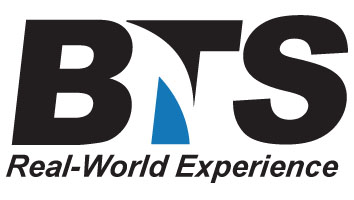| Hands-On DVB-S2 and DVB-RCS for VSAT and Direct Satellite TV Broadcasting |
 |
Colour Television
NTSC, PAL, SECAM
Analogue vs. Digital Systems
Interlaced vs. Progressive
Introduction to Digital Video Broadcasting
Formats:
4:2:2, 4:2:0, CIF, QSIF
The SignalsSatellite vs Cable delivery
Components of a modern Digital TV Service Network
Video Head End
Streamers
Encoders and Transcoders
Multiplexers
Set-top Boxes
Service Types and Issues
Channel Zapping
Encoder Classification: MPEG-2, MPEG-4, H.264
Hands-on Exercise Viewing TV services at different rates
Evolution of DVB for DVB.org
ETSI Digital Video Broadcast Standards
DVB publications grouping
Transmission
Multiplexing
Source Encoding and Subtitling
Interactivity
MHP
Interfacing
Internet protocol
Conditional Access
Measurement
Example Applications
DVB-C
DVB-S/S2
DVB-T
DVB-IPI
DVB-H
DVB-DATA
ETSI Digital Video Broadcast Standards
DVB-C, DVB-S/S2, DVB-T, DVB-H, DVB-IPI
Hands-on Exercise Receiving DVB service onto a PC
Encoding in MPEG-2
Source Encoding
MPEG Compression Concepts
Discrete Cosine Transforms
Prediction and Interpolation
Reordering
Motion: Prediction, estimation and compensation
I, P and B Pictures
MPEG Levels and Profiles
Framing Formats
Multiplexing of Signals
Packetized Element Stream(PES)
Decode Time Stamp (DTS)
Presentation Time Stamp (PTS)
System Clock Reference (SCR)
Quantization of Program and Transport Streams
Encoding Sound
MPEG-2 layer 3
AAC and AC3
Hands-on Exercise Receiving Analyzing I, P and B pictures in MPEG Stream
Transport stream format
Packetized Elementary Streams (PES)
MPEG Packets and headers
Service Information (SI), Program Specific Information (PSI)
Data Broadcasting DSM-CC
MHP Signalling
Program Allocation Table (PAT)
Program Map Table (PMT)
Conditional Access Table (CAT)
Network Information Table (NIT)
Service Description Table (SDT)
Event Information Table (EIT)
Effect on STB Behaviour
MPEG standards for Channel Coding and Forward Error Recovery
Energy Dispersal
Reed-Solomon Coding
Convolutional Coding
Interleaving
Trellis Decoding
Hands-on Exercise Analyzing an MPEG-2 transport stream
EN 301 192
Using PES to carry data
Multi-protocol Encapsulation (MPE)
Using PSI and SI for data streams
IP MAC Notification Table
Time Slicing and MPE Forward Error Correction (MPE-FEC)
Data carousels
Object carousels
ETSI TR 102 033 IPI Architecture
System Structure
DVB-IPI Home Reference Model
ETSI TS 102 034 MPEG 2 Transport over IP
Protocol stack for DVB-IP services
Service Discovery and Selection (SD&S)
Transport of MPEG-2 TS
Network Provisioning
Clock Recovery using RTP
Carrying IPTV over DVB-DATA channels
Overcoming Packet loss and jitter
Hands-on Exercise Converting Live DVB stream into IPTV stream
EN 302 307
Functional block diagram of the DVB-S2 System
Comparison with DVB-S
Encoding of User Packets
Bit Interleaving scheme
Optional pilots
Scrambling
Example of IP services using a DVB-S2 ACM link
TR 102 376 Guidelines for DVB-S2
DVB-S2 constellations before physical layer scrambling
C/N versus spectrum efficiency
Adaptive Coding and Modulation
Null Packets and their deletion
Air interface architecture of the DVB-S2 using ACM for IP services
TR 101 790 Guidelines for the use of EN 301 790
Interaction channel for satellite distribution systems
Architecture with single or multiple feeders
Architecture with regenerative satellites
Spectrum spreading in the forward link
Return Channel Satellite Terminals
Synchronization
Coding
FEC
Turbo Coding
Comparison between Turbo coding approaches
Multiple access
Fixed MF-TDMA
Dynamic MF-TDMA (Optional)
Segmentation of the return link capacity
Frames, Superframes and Timeslots
Capacity request categories
Synchronization procedures
Queuing strategy
Control and management
Configuration parameters between RCST and NCC using SNMP
Supported MIB-II groups
Coding of SI for forward link signalling
Mobility Management
Security and Cryptographic primitives
Modulation
System performance
User network guidelines
Multicast Handling
Star/Mesh regenerative networks
COTS VSAT Systems
SCPC and MCPC systems
Linkstar
iDirect D-TDMA
Aloha Networks Spread Aloha
DVB/SCPC
DVB-S2/SCPC
Dual Redundant
VSAT System Solutions
VSAT VPN
Performance Issues of TCP over long delay
Performance Solutions
Evaluation and Review